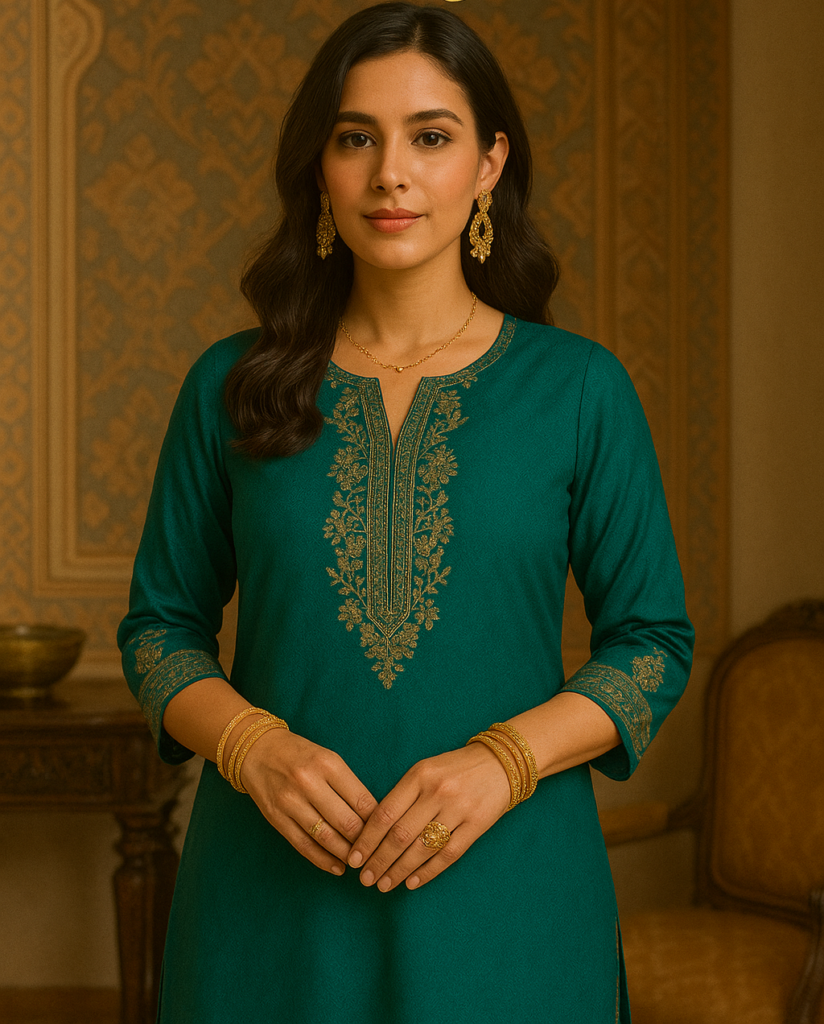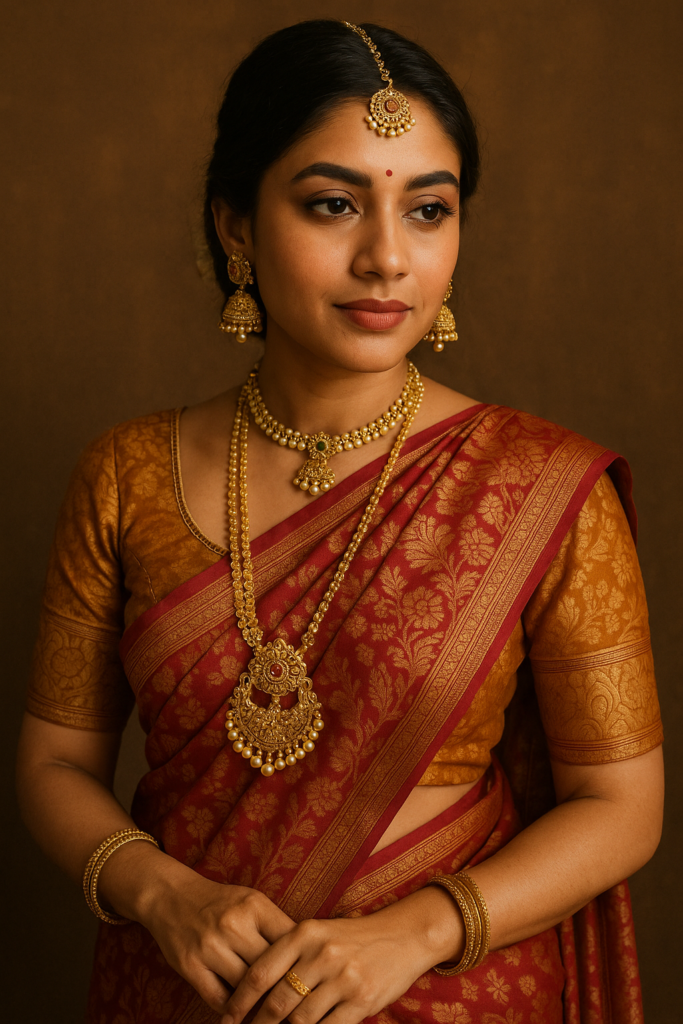
"Adorning Heritage: Beauty of Indian Traditional Jewellery"
Indian traditional jewellery is an expression of culture, ancestry, and identity and goes beyond simple ornamentation. It is an essential component of every celebration in Indian life, telling tales of workmanship, regional variation, and emotional value.
A Legacy Wrapped in Gems and Gold
India has always had a unique place in the globe because of its extensive gold and precious stone deposits as well as its long-standing jewelry-making traditions. Over the years, each Indian region has created its own distinct style, such as the Filigree silver from Odisha, the Meenakari enamel work from Varanasi, the Kundan and Polki from Rajasthan, and the Temple jewelry from Tamil Nadu.
These are not just beautiful to look at—they’re steeped in symbolism. For example:
- The Maang Tikka signifies the third eye or wisdom.
The Mangalsutra symbolizes marital commitment.
The Payal (anklet) is often worn to enhance feminine grace and has roots in Ayurvedic beliefs.
Jewellery and Indian Identity
In India, jewelry is strongly associated with social, religious, and regional identity. As a symbol of blessing and prestige, it is worn at festivals, marriages, and other ceremonies. In addition to being a piece of jewelry, a bride’s jewelry is a symbol of riches, history, and a family legacy that has been carried down through the years.
Indian women still spend money on jewelry as heirlooms that are valuable both financially and emotionally. Mothers frequently give their daughters their wedding bangles, necklaces, or earrings as a token of appreciation and a connection.


Importance of Indian Jewellery on Every Occasion
1. Weddings: A Symbol of Prosperity and Commitment
Indian weddings would not be complete without ornate jewelry. Mangalsutras, maang tikkas, nath (nose rings), and jhumkas are elaborate jewelry that brides wear to represent marital bliss, wealth, and family honor. In particular, gold jewelry is said to be lucky and bring good fortune. Regional peculiarities that highlight the variety of bridal adornments include South Indian temple jewelry and Rajasthani kundan. Jewelry strengthens family ties and plays a big role in gift-giving customs.
2. Festivals: Celebrating Divinity and Tradition
Wearing jewelry on festivals like Diwali, Navratri, or Raksha Bandhan makes the celebrations more joyous. To celebrate and honor customs, women adorn themselves with anklets, bangles, and chokers. Invoking the blessings of Goddess Lakshmi and symbolizing riches, gold and diamond jewelry are bought during Diwali. Wearing odiyanam (waist belts) and vanki (armlets) while visiting temples in South India combines spirituality with style.
3. Religious Ceremonies: Offerings to the Divine
Jewelry has a holy place in religious ceremonies. Women wear items like chandbalis or matha pattis during pujas, and devotees present gold and silver trinkets to the gods. Bangles or chains are given as gifts to commemorate milestones in rituals like Upanayanam (the thread ceremony) or Annaprashan (the child’s first rice-eating ceremony). These items frequently have religious significance and are thought to provide divine protection and ward off evil.
5. Daily Wear: Embracing Identity
Even in everyday life, Indian women wear simple yet meaningful jewellery like toe rings, bangles, or bindis, which are often tied to marital status or cultural identity. In rural areas, silver jewellery, such as payal (anklets) or bajuband (armlets), is popular for its affordability and aesthetic appeal. These pieces reinforce a sense of belonging to one’s community and traditions.


